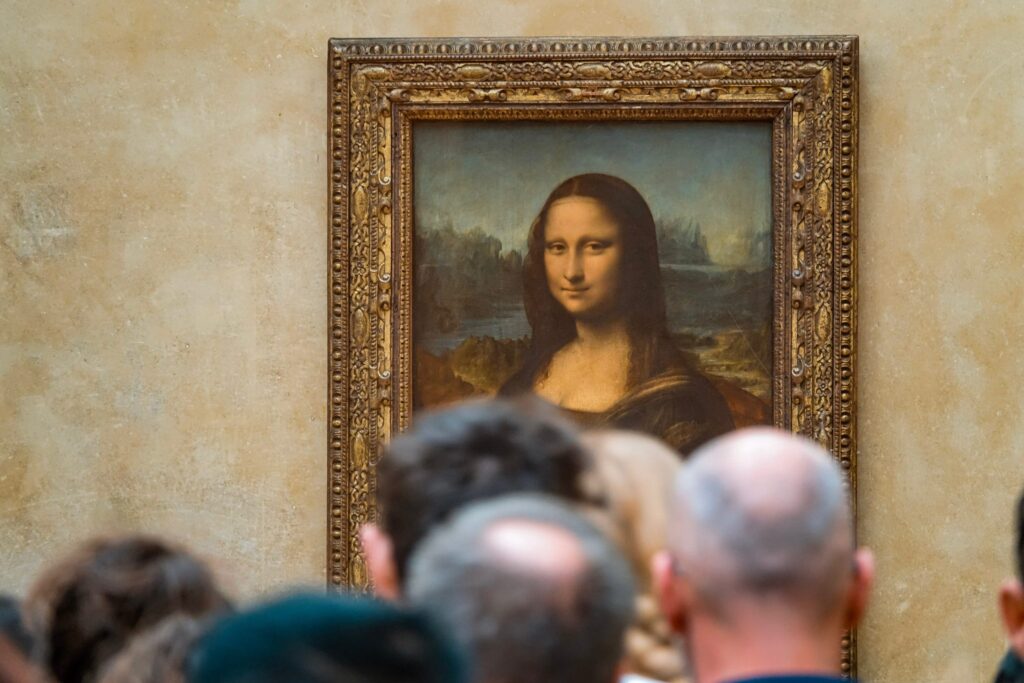Five incidents in which the Mona Lisa was damaged or stolen
- donderdag 2 juni 2022
- 14:31
- By: Patrick Stoffer

Last week, a visitor at the Louvre smeared the glass behind which Leonardo da Vinci 's Mona Lisa is displayed with cake. However, this was not the first time someone tried to damage or even steal the famous painting. Such incidents occurred four more times in history.Text: Patrick StofferThe visitor was disguised as an old woman in a wheelchair and initially tried to break the protective glass behind which the Da Vinci hangs. Eventually, the man was overpowered by security. The 1503 painting is priceless and thus prey to vandals and thieves. Four other times before, the painting was a victim of vandalism and theft.
One of the reasons the Mona Lisa is internationally famous is thanks to its theft in 1911 by Italian Vincenco Peruggia. That year, Peruggia and two accomplices hid themselves in a closet in the Louvre, emerged when the museum was closed, took the painting and boarded a train that transported them out of Paris. As more and more attention came from both the French press and beyond, he held on to the work and even hid it under the floor in his Paris apartment. About two years after the theft, Peruggia tried to sell the Mona Lisa to an art dealer in Florence, aiming to return the painting to its roots in Italy. The dealer called the director of Uffizi Galleries, who recognized the work and called the police. Peruggia spent six months behind bars and the work was returned to the Louvre.
In 1956, there were not one, but two attempts to vandalize the Mona Lisa. First, a vandal tried to damage the canvas by throwing acid at it, damaging the lower part. Later that year, Bolivian Hugo Unjaga Villegas threw a stone at the Mona Lisa. The reason: "I had a stone in my hand and suddenly had the idea of throwing it at the painting. Fortunately, the protective glass installed after the initial incident prevented the attack, causing only minor damage to the painting. This proved easy to repair.
The Mona Lisa rarely leaves the Louvre, which explains why more than a million people saw the artwork when it moved once to the National Museum in Tokyo. One of those visitors was 25-year-old Tomoko Yonezu, a Japanese woman who tried to spray the artwork with red paint on the first day. Days before the opening, an argument arose over the exhibit, as people in need of assistance were not allowed in under the guise of crowd control. Yonezu took matters into his own hands and had some success. About 20 to 30 drops of paint made it to the canvas, but the canvas was spared. When the woman in question was in court, human rights groups stood outside the courthouse, seeing sexism in the legal proceedings. Yonezu eventually got off with a fine, but still achieved something with her action. The museum organized a day where only those in need were allowed access to the exhibition.
A Russian woman decided to visit the Louvre in 2009 and threw an empty teacup against the painting. Again, the glass protected the Mona Lisa from damage. The woman's motivation was that she had been denied French citizenship. Critics believed that the painting should be better protected from such attacks and it should be moved to its own gallery, separated from other works. Measures were eventually taken by deploying queues to control the crowds around the painting. The glass also received an upgrade in 2019.
So last week was the fifth incident. A man, dressed as an old woman, rode up to the painting in his wheelchair and tried to break the glass. When that failed, he smeared a cake over the glass. After he was overpowered he shouted something about protecting the earth.
Also read: 'The five most expensive Dutch paintings ever sold'.
© 2024 MASTERS EXPO. All rights reserved.